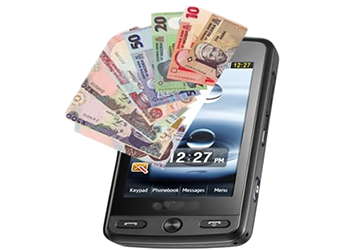Law 31
Control the Options: Get Others to Play with the Cards you Deal
The
best deceptions are the ones that seem to give the other person a
choice: Your victims feel they are in control, but are actually your
puppets.
Give people options that come out in your favor whichever one they choose. Force them to make choices between the lesser of two evils, both of which serve your purpose. Put them on the horns of a dilemma: They are gored wherever they turn.
Law 32
Play to People’s Fantasies
The
truth is often avoided because it is ugly and unpleasant. Never appeal
to truth and reality unless you are prepared for the anger that comes
for disenchantment. Life is so harsh and distressing
that people who can manufacture romance or conjure up fantasy are like
oases in the desert: Everyone flocks to them.There is great power in tapping into the fantasies of the masses.
Law 33
Discover Each Man’s Thumbscrew
Everyone
has a weakness, a gap in the castle wall. That weakness is usual y an
insecurity, an uncontrollable emotion or need; it can also be a small
secret pleasure. Either way, once found, it is a thumbscrew you can turn to your advantage.
Law 34
Be Royal in your Own Fashion: Act like a King to be treated like one
The
way you carry yourself will often determine how you are treated; In the
long run, appearing vulgar or common will make people disrespect you.
For
a king respects himself and inspires the same sentiment in others. By
acting regally and confident of your powers, you make yourself seem
destined to wear a crown.
Law 35
Master the Art of Timing
Never
seem to be in a hurry – hurrying betrays a lack of control over
yourself, and over time. Always seem patient, as if you know that
everything will come to you eventually.
Become a
detective of the right moment; sniff out the spirit of the times, the
trends that will carry you to power. Learn to stand back when the time
is not yet ripe, and to strike fiercely when it has reached fruition.
Law 36
Disdain Things you cannot have: Ignoring them is the best Revenge
By acknowledging a petty problem you give it existence and credibility. The
more attention you pay an enemy, the stronger you make him; and a small
mistake is often made worse and more visible when you try to fix it. It
is sometimes best to leave things alone. If there is something you
want but cannot have, show contempt for it. The less interest you
reveal, the more superior you seem.
Law 37
Create Compelling Spectacles
Striking imagery and grand symbolic gestures create the aura of power – everyone responds to them.
Stage spectacles for those around you, then full of arresting visuals and radiant symbols that heighten your presence. Dazzled by appearances, no one will notice what you are really doing.
Law 38
Think as you like but Behave like others
If
you make a show of going against the times, flaunting your
unconventional ideas and unorthodox ways, people will think that you
only want attention and that you look down upon them.
They
will find a way to punish you for making them feel inferior. It is far
safer to blend in and nurture the common touch. Share your originality
only with tolerant friends and those who are sure to appreciate your
uniqueness.
Law 39
Stir up Waters to Catch Fish
Anger
and emotion are strategically counterproductive. You must always stay
calm and objective. But if you can make your enemies angry while
staying calm yourself, you gain a decided advantage.
Put your enemies off-balance: Find the chink in their vanity through which you can rattle them and you hold the strings.
Law 40
Despise the Free Lunch
What
is offered for free is dangerous – it usually involves either a trick
or a hidden obligation. What has worth is worth paying for. By
paying your own way you stay clear of gratitude, guilt, and deceit. It
is also often wise to pay the full price – there is no cutting corners
with excellence.
Be lavish with your money and keep it circulating, for generosity is a sign and a magnet for power.
Law 41
Avoid Stepping into a Great Man’s Shoes
What happens first always appears better and more original than what comes after.
If you succeed a great man or have a famous parent, you will have to accomplish double their achievements to outshine them. Do not get lost in their shadow, or stuck in a past not of your own making: Establish
your own name and identity by changing course. Slay the overbearing
father, disparage his legacy, and gain power by shining in your own way.
Law 42
Strike the Shepherd and the Sheep will Scatter
Trouble
can often be traced to a single strong individual – the stirrer, the
arrogant underling, the poisoned of goodwill. If you allow such people
room to operate, others will succumb to their influence. Do not wait for the troubles they cause to multiply, do not try to negotiate with them – they are irredeemable. Neutralize their influence by isolating or banishing them. Strike at the source of the trouble and the sheep will scatter.
Law 43
Work on the Hearts and Minds of Others
Coercion
creates a reaction that will eventually work against you. You must
seduce others into wanting to move in your direction. A
person you have seduced becomes your loyal pawn. And the way to seduce
others is to operate on their individual psychologies and weaknesses. Soften
up the resistant by working on their emotions, playing on what they
hold dear and what they fear. Ignore the hearts and minds of others and
they will grow to hate you.
Law 44
Disarm and Infuriate with the Mirror Effect
The
mirror reflects reality, but it is also the perfect tool for deception:
When you mirror your enemies, doing exactly as they do, they cannot
figure out your strategy. The Mirror Effect mocks and humiliates them, making them overreact. By
holding up a mirror to their psyches, you seduce them with the illusion
that you share their values; by holding up a mirror to their actions,
you teach them a lesson. Few can resist the power of Mirror Effect.
Law 45
Preach the Need for Change, but Never Reform too much at Once
Everyone
understands the need for change in the abstract, but on the day-to-day
level people are creatures of habit. Too much innovation is traumatic,
and will lead to revolt. If you are new to a position
of power, or an outsider trying to build a power base, make a show of
respecting the old way of doing things. If change is necessary, make it feel like a gentle improvement on the past.
Law 46
Never appear too Perfect
Appearing
better than others is always dangerous, but most dangerous of all is to
appear to have no faults or weaknesses. Envy creates silent enemies.
It
is smart to occasionally display defects, and admit to harmless vices,
in order to deflect envy and appear more human and approachable. Only
gods and the dead can seem perfect with impunity.
Law 47
Do not go Past the Mark you Aimed for; In Victory, Learn when to Stop
The moment of victory is often the moment of greatest peril.
In
the heat of victory, arrogance and overconfidence can push you past the
goal you had aimed for, and by going too far, you make more enemies
than you defeat. Do not allow success to go to your
head. There is no substitute for strategy and careful planning. Set a
goal, and when you reach it, stop.
Law 48
Assume Formlessness
 Always write a brief, tempting ad describing your Information package, offer free details and Bonus too.
Always write a brief, tempting ad describing your Information package, offer free details and Bonus too. Always write a brief, tempting ad describing your Information package, offer free details and Bonus too.
Always write a brief, tempting ad describing your Information package, offer free details and Bonus too.












